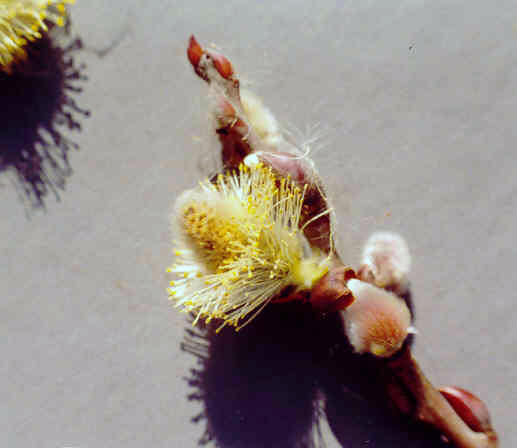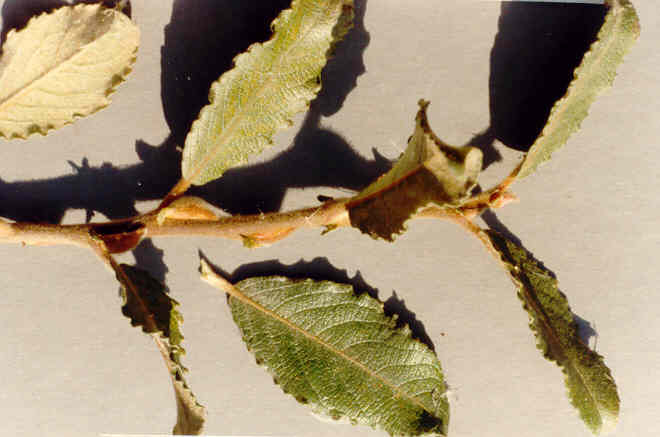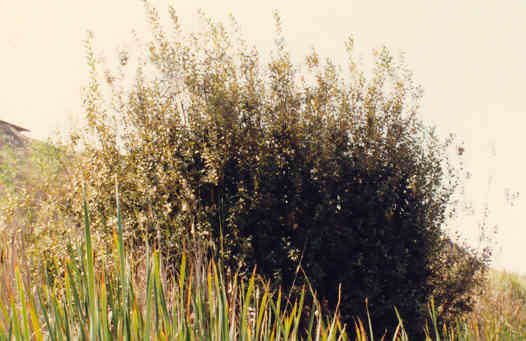
Salix discolor Muhl.
 |
Salix discolor Muhl.
Salicaceae (Willow Family)Eastern U.S. to CanadaPussy Willow |
February Photo
Plant Characteristics:
Shrub or tree to 20 ft., branches pubescent when young; lvs. oblong,
1.5-4 in. long, irregularly wavy-toothed to entire, glaucous beneath, glabrous
when mature; stipules semi-cordate, deciduous; catkins in advance of lvs.,
staminate to 1.5 in. long, pistillate to 3 in. in fr., ovary pubescent, beaked.
Habitat:
From the South northerly to Manitoba, Va. and Mo.
Escape from cultivation here. (my
comment). Bloom dates not given in
Bailey. My photos were taken in
Feb.
Name:
Sa-lix, classical name of the willow.
(Bailey 318). Discolor, of
two or of different colors. (Bailey
14). The leaves are green above and
gray below. (my comment).
General:
Rare in the study area. Found
only once and this along Back Bay Dr. northerly of Big Canyon.
(my comments).
The bark and berries had special application to the reproductive organs
of women. Referred to as the "woman's remedy," this herb is
valuable for the inflamed and ulcerated surfaces of the mucous membrane of the
vagina. The bark, in powdered form,
is mixed (one ounce) with a pint of boiling water and used as a douche.
The same solution may be taken for the relief of ovarian pain.
For men: Highly regarded in
cases of nocturnal involuntary emissions, also known as "wet dreams."
For both men and women: This
herb serves as a sexual anaphrodisiac where there is sexual irritation of the
organs resulting from various genito-urinary irritations.
By relieving the irritation, the desire for excessive sex relations is
diminished. Also used for external
ulcers, rheumatism, inflamed joints, muscles and nerves, using the same solution
as above described. (Kadans 65,66).
Kadans states that the Pussy Willow is from Europe and naturalized in
North America. Kadans also refers
to the berries of this plant, which must be an error as willows never have
berries. His reference is to Salix
discolor and Salix nigra, so there is little chance his error is in
the plant name. (my comment and
substantiated by John Johnson).
See Salix exigua, S. gooddingii and S. lasiolepis
for additional uses of the willow. (my comment).
Text Ref:
Bailey 320.
Photo Ref:
Aug 86 # 2,3; Feb 1 87 # 19,20.
Identity: by John Johnson.
First Found: February 1987.
Plant specimen donated to UC Riverside in 2004.
Computer Ref: Plant Data 334.
Last edit 8/8/05.
 |
 |
August Photo August Photo